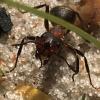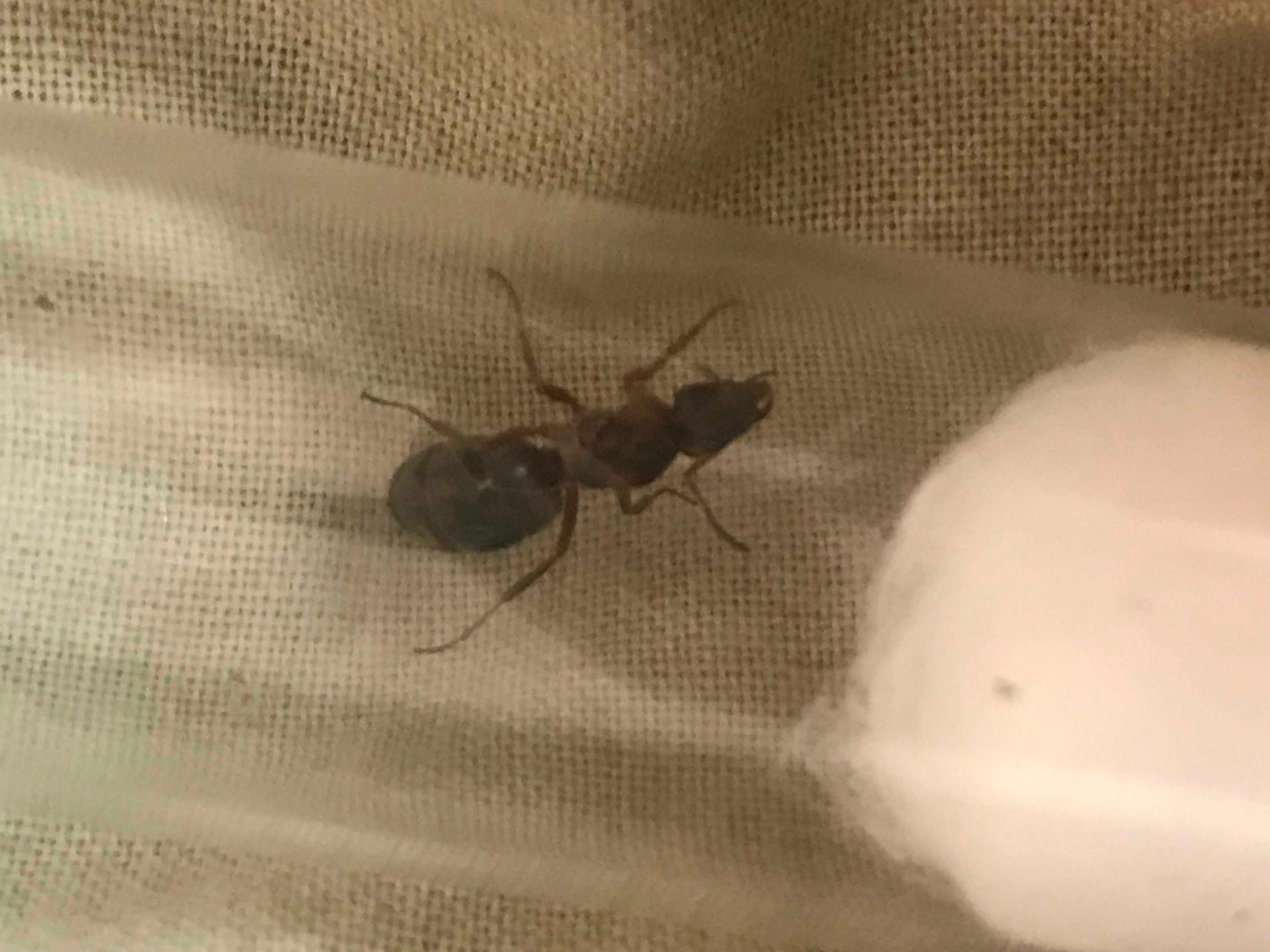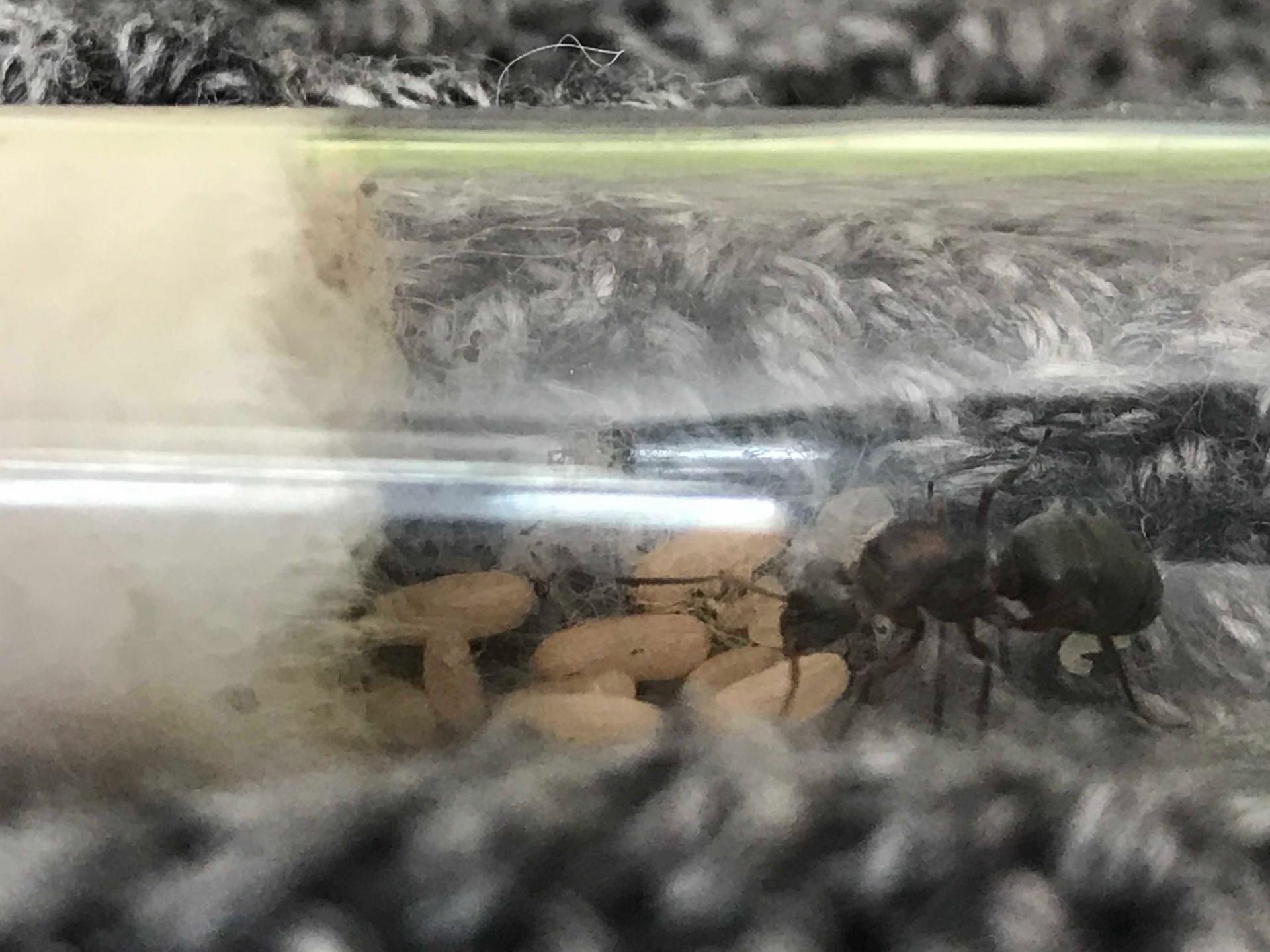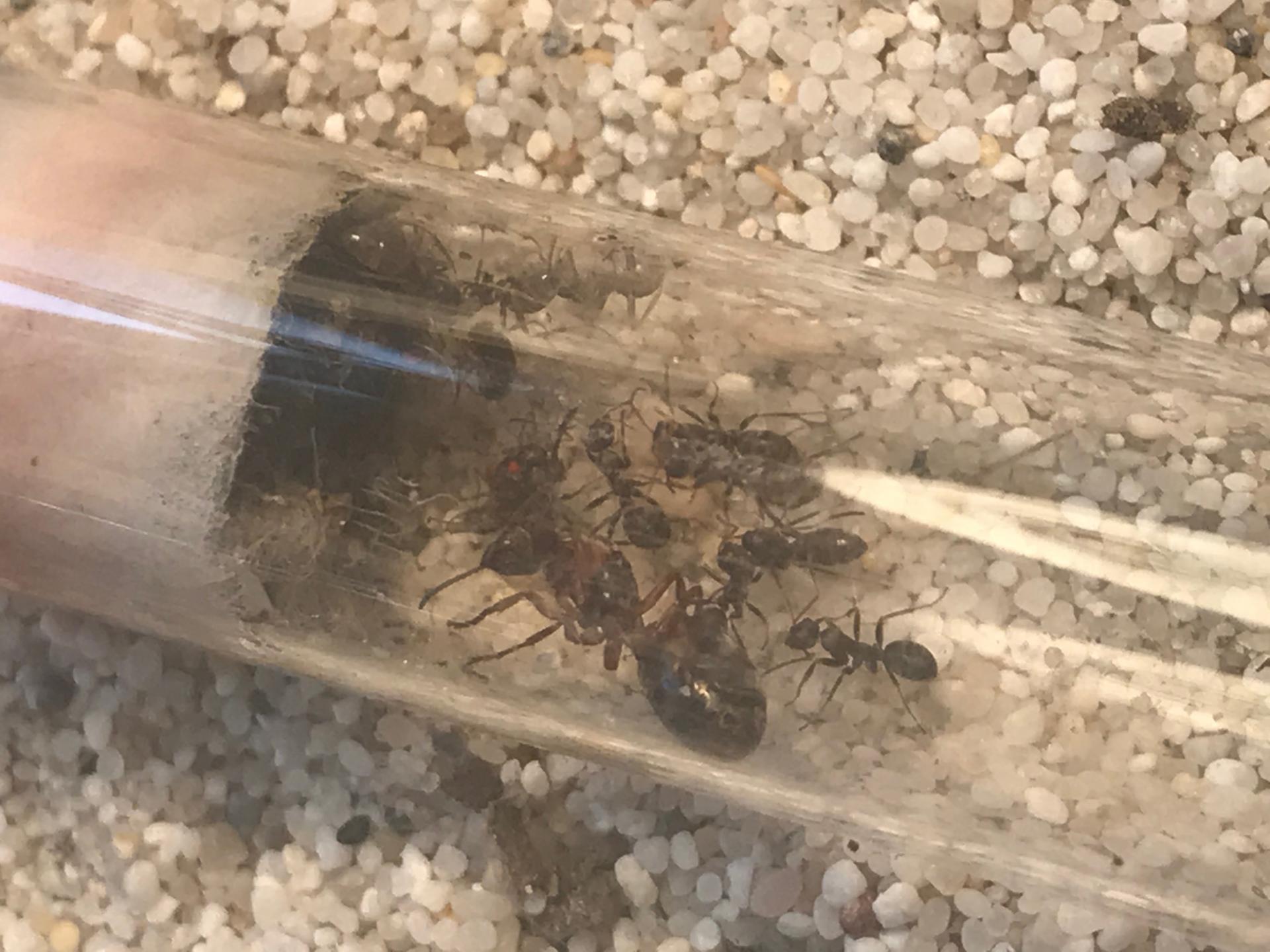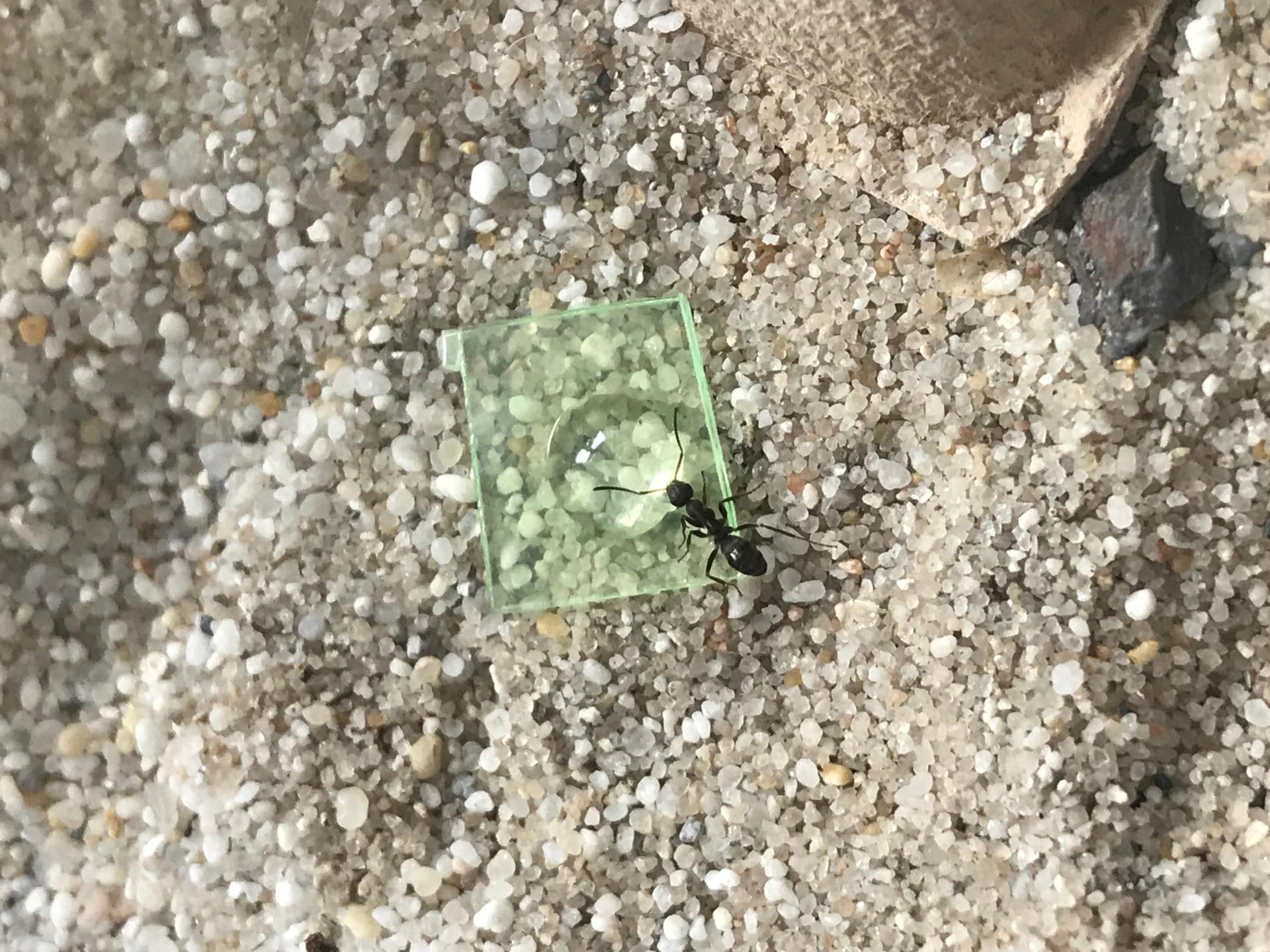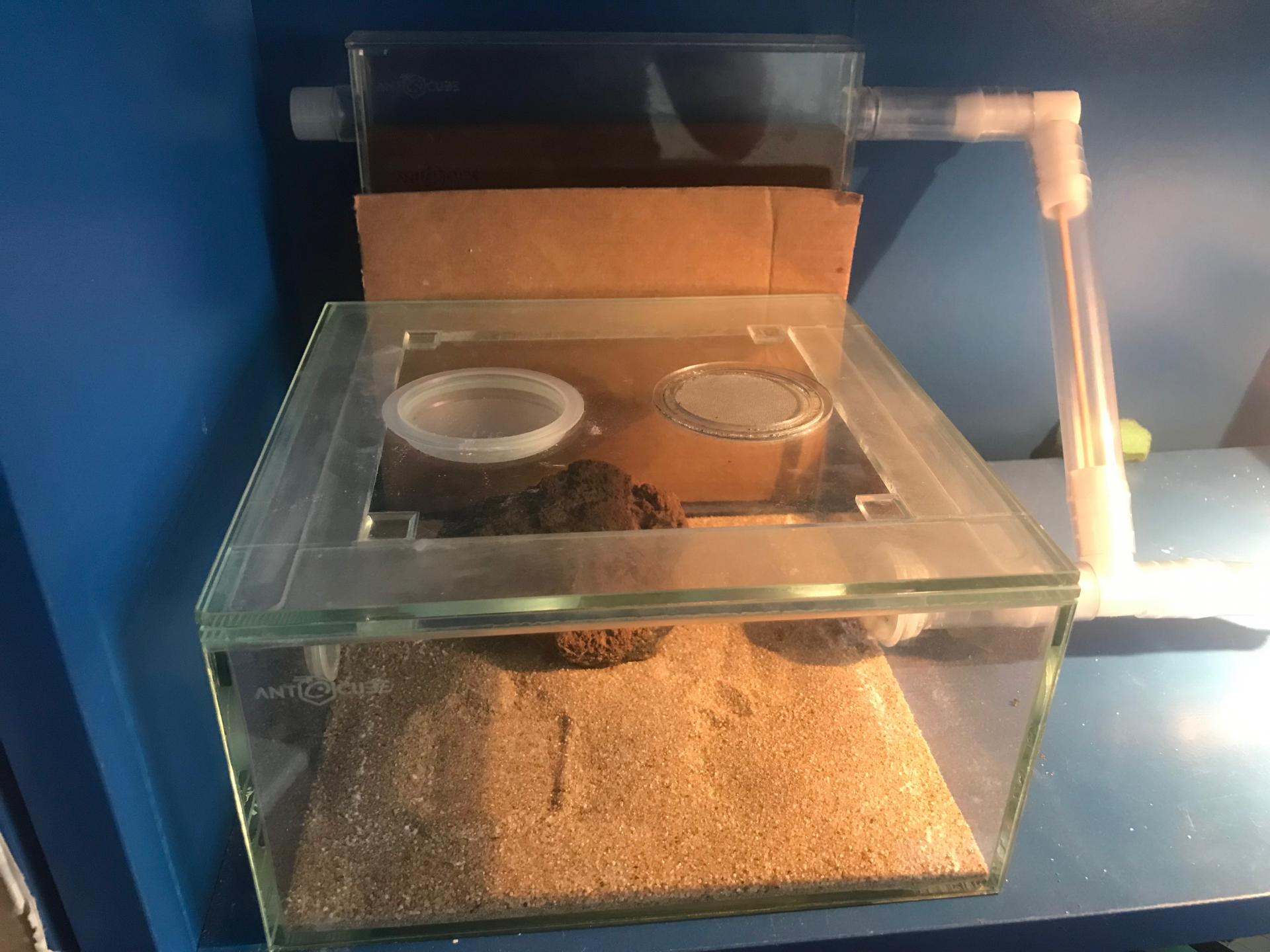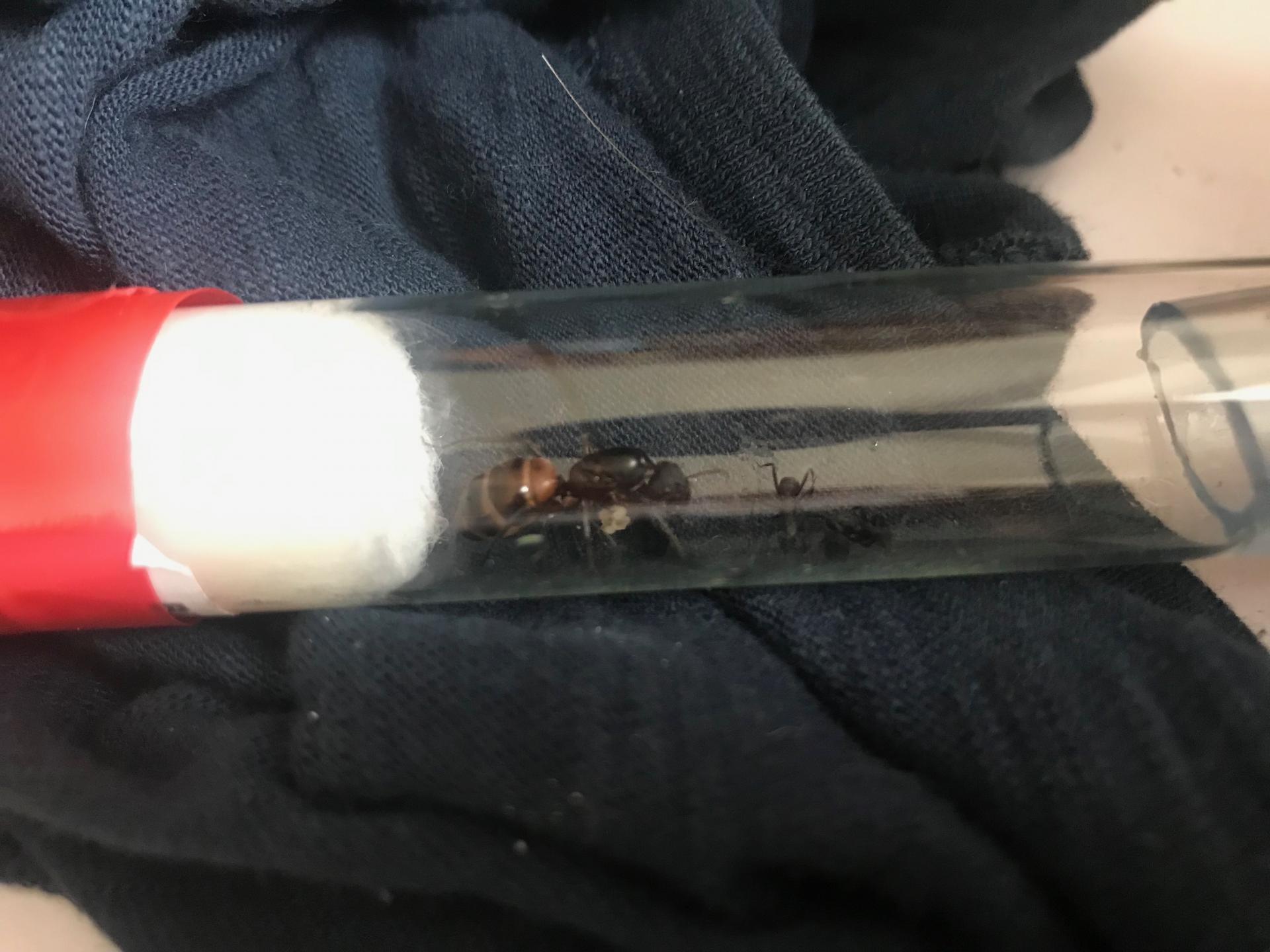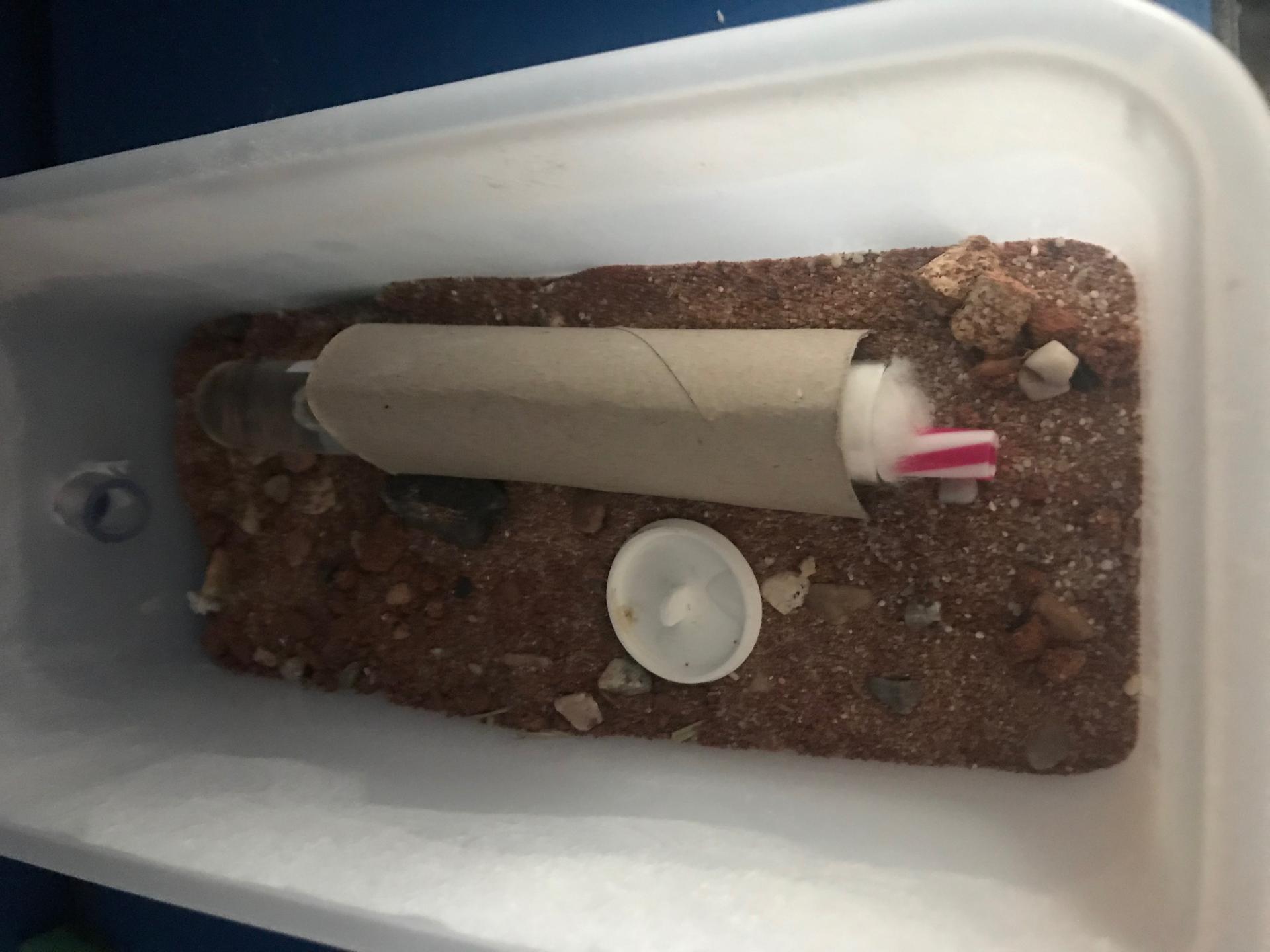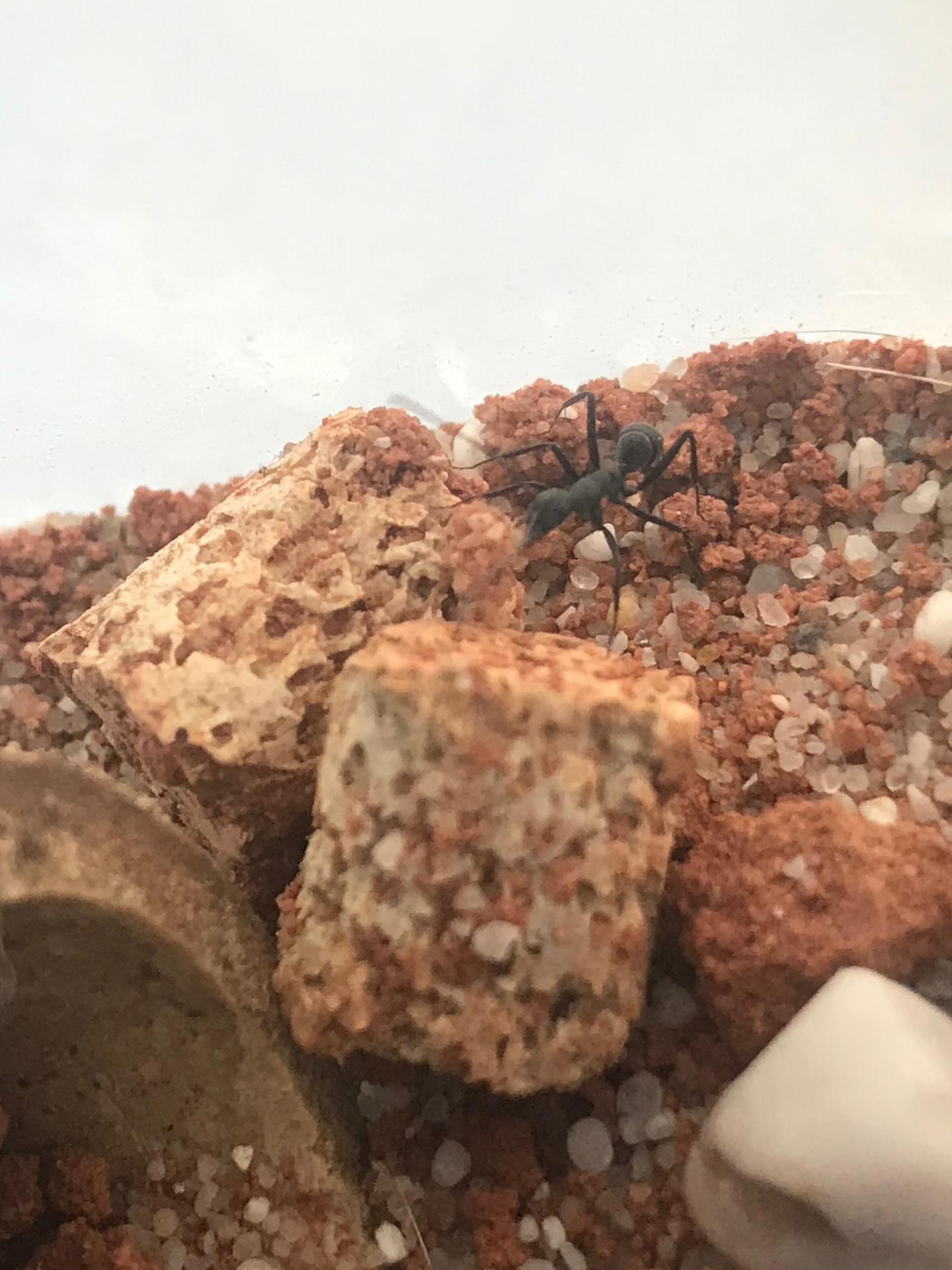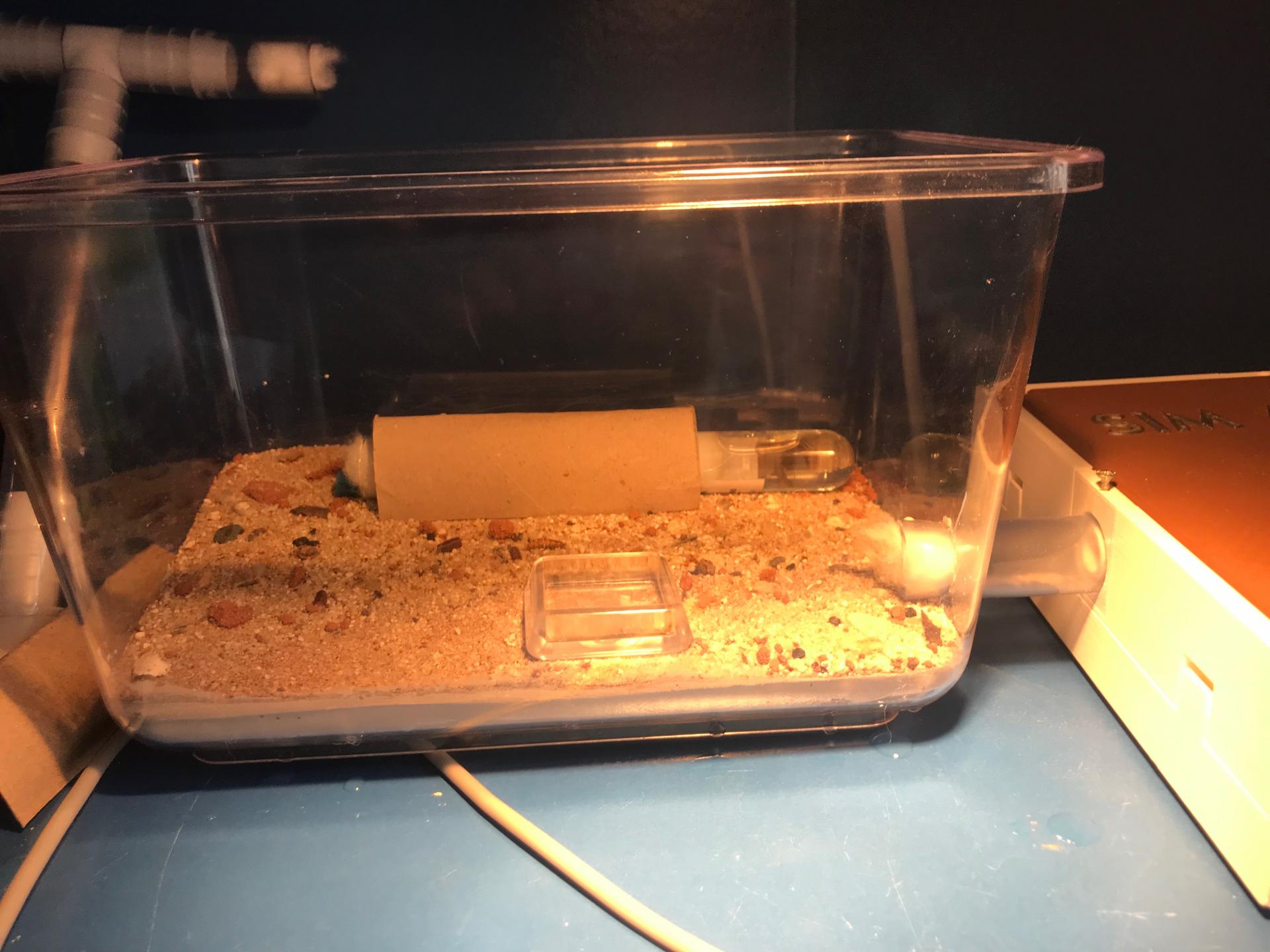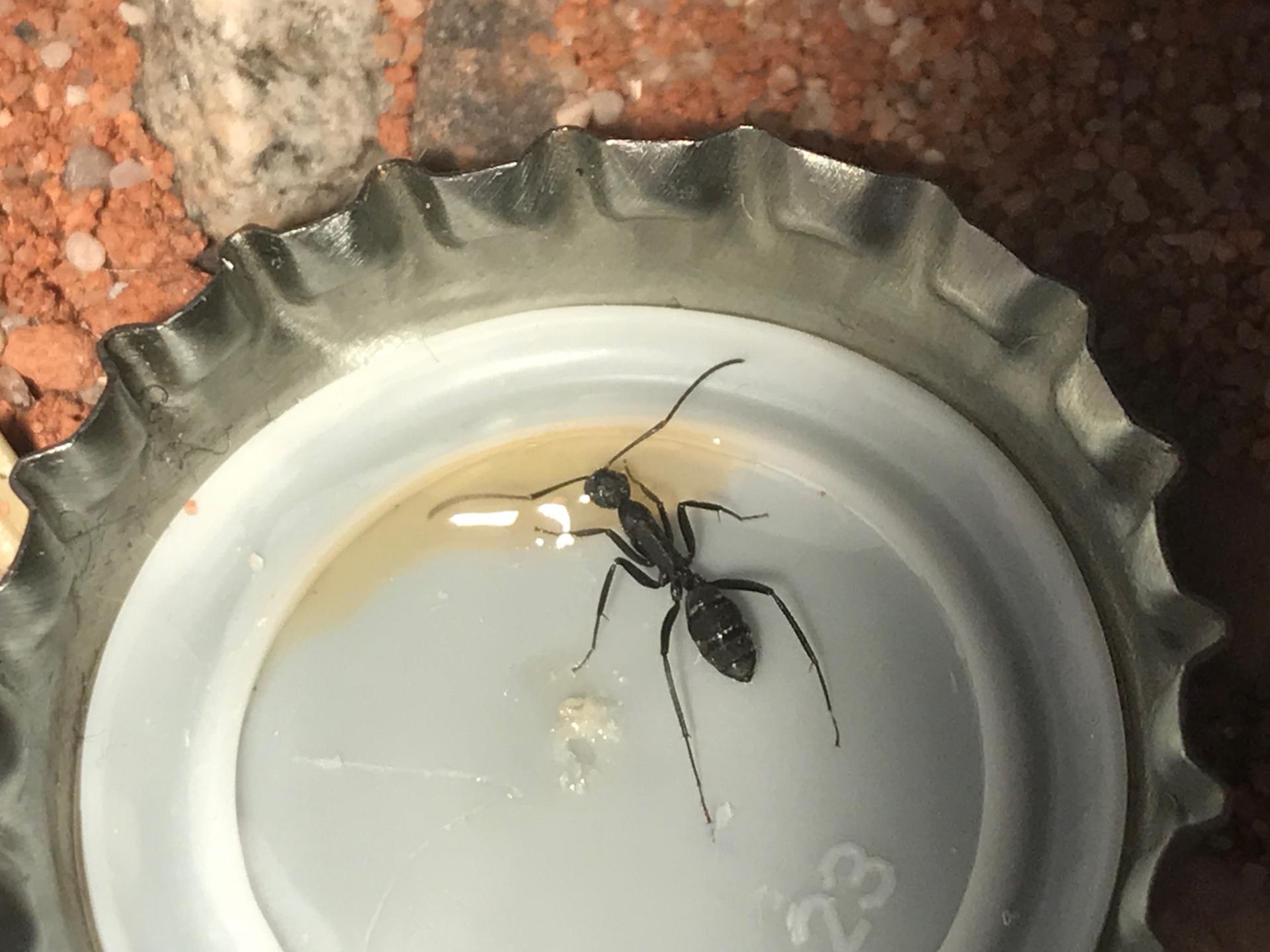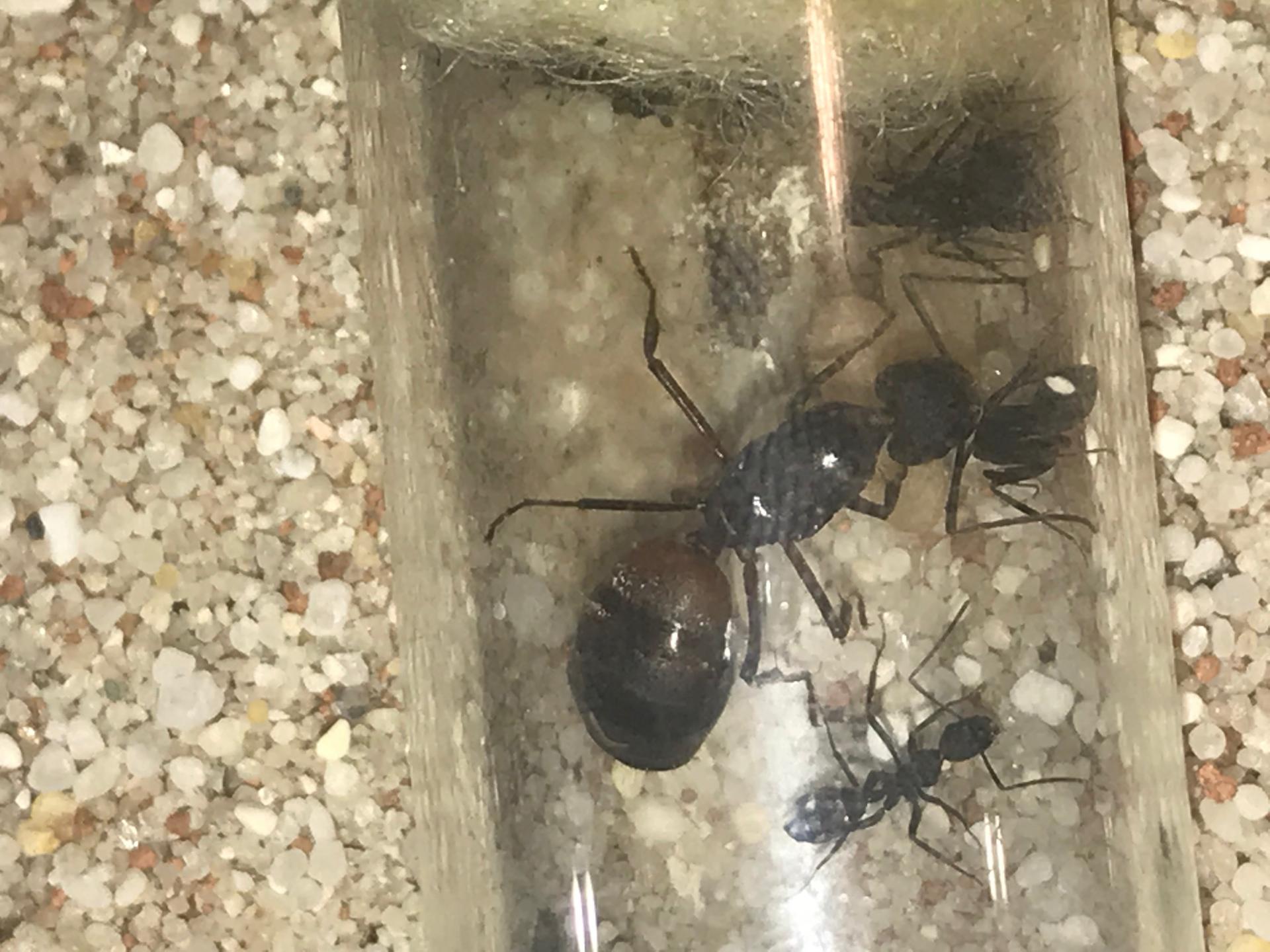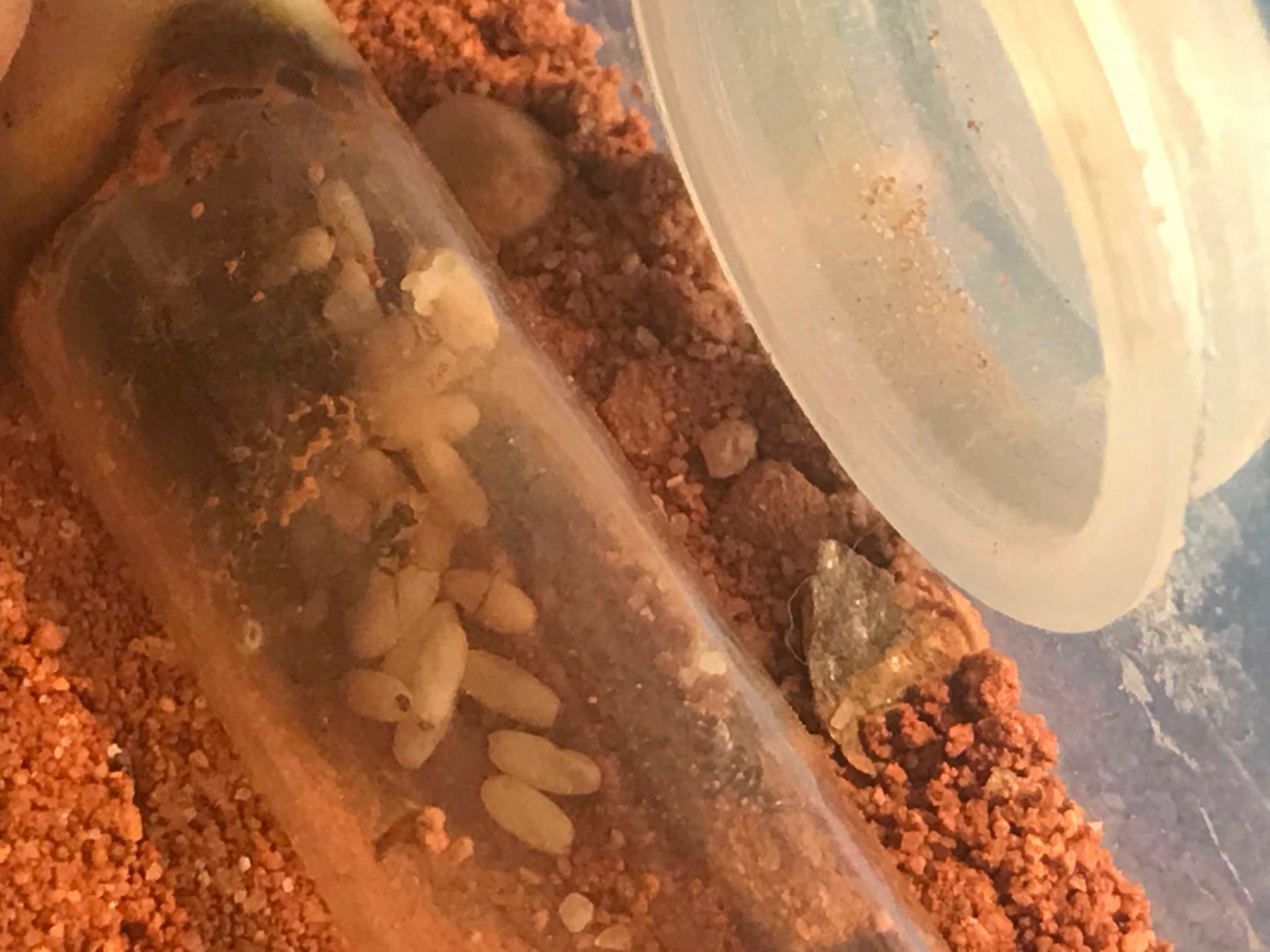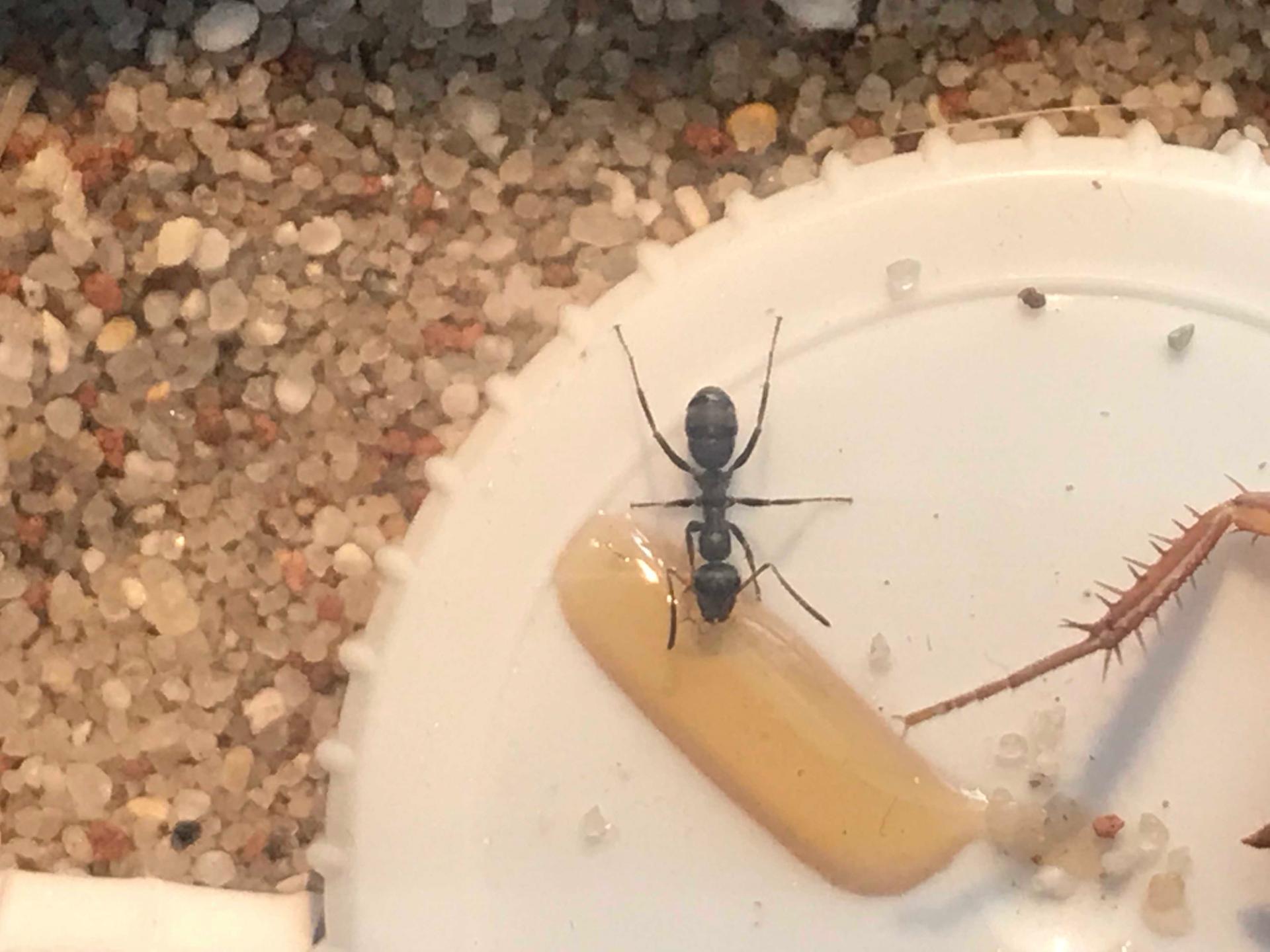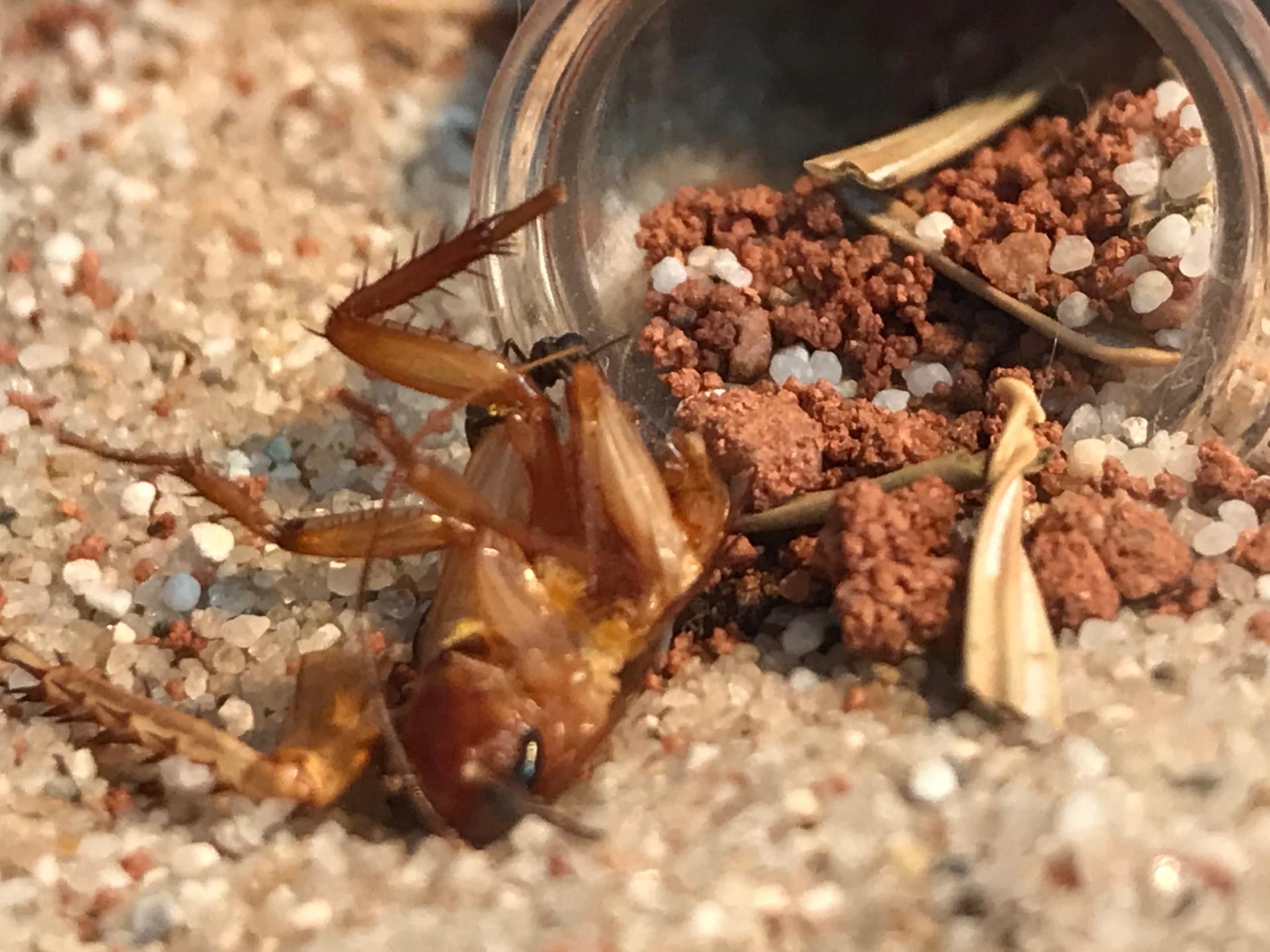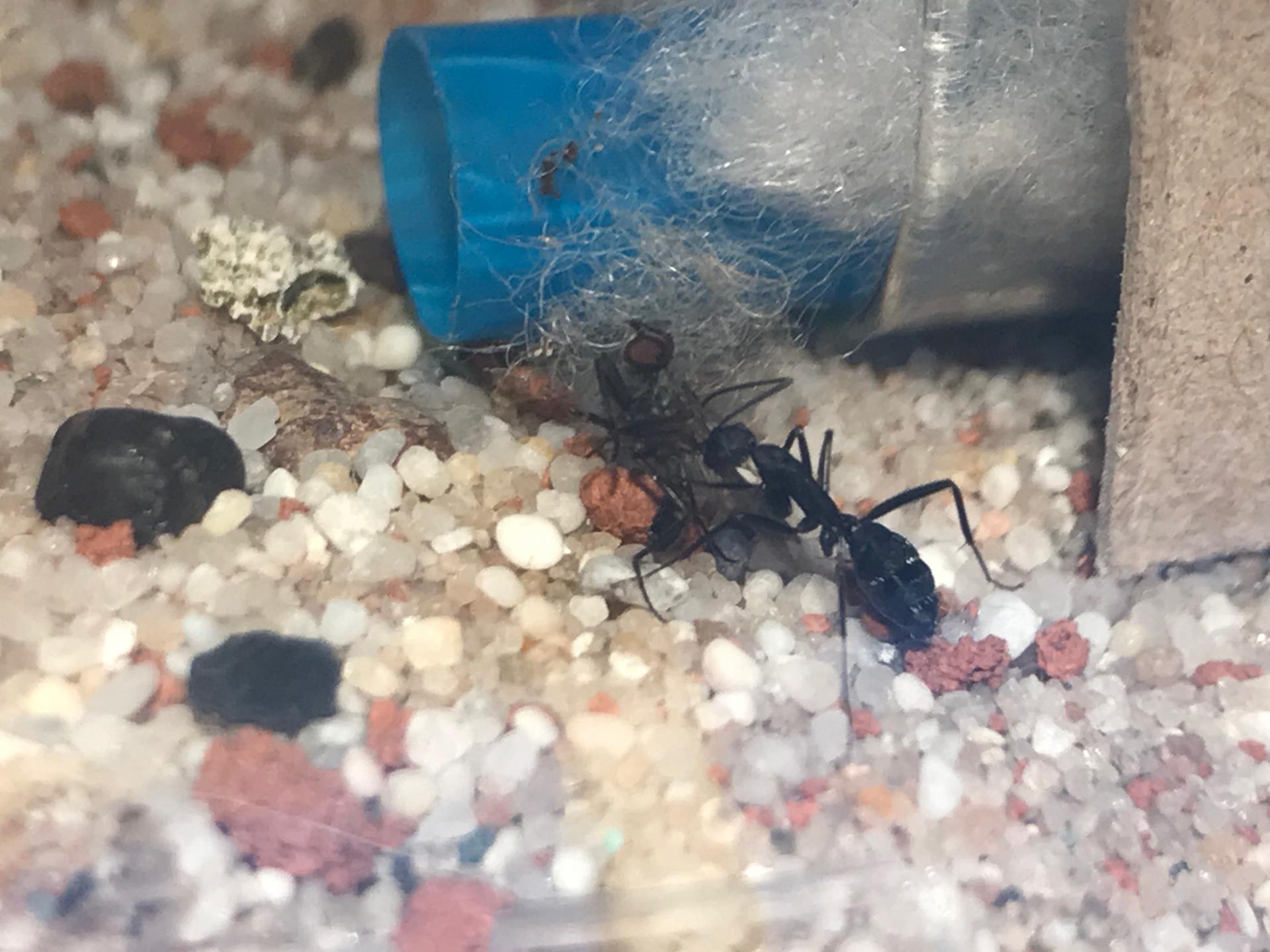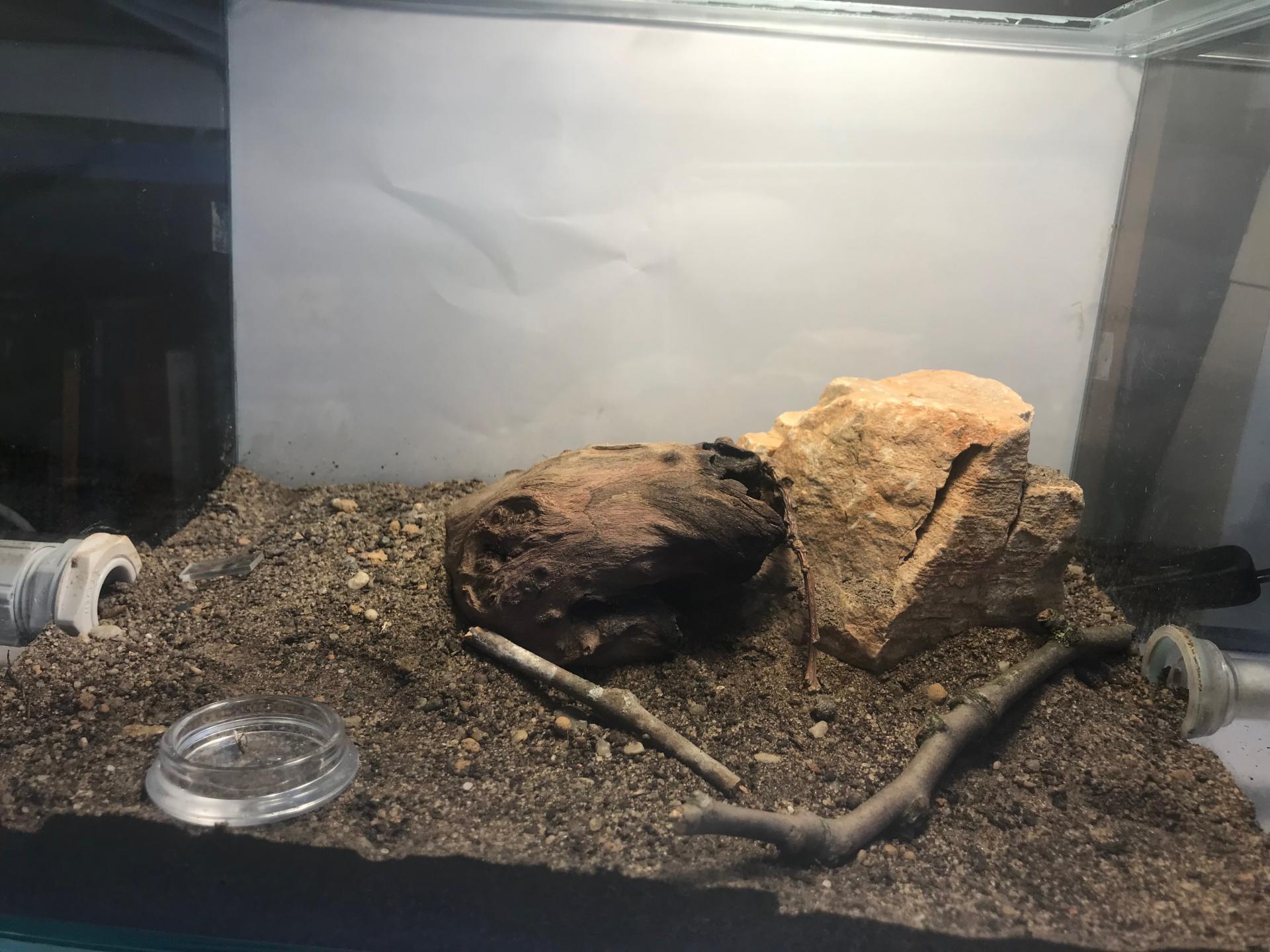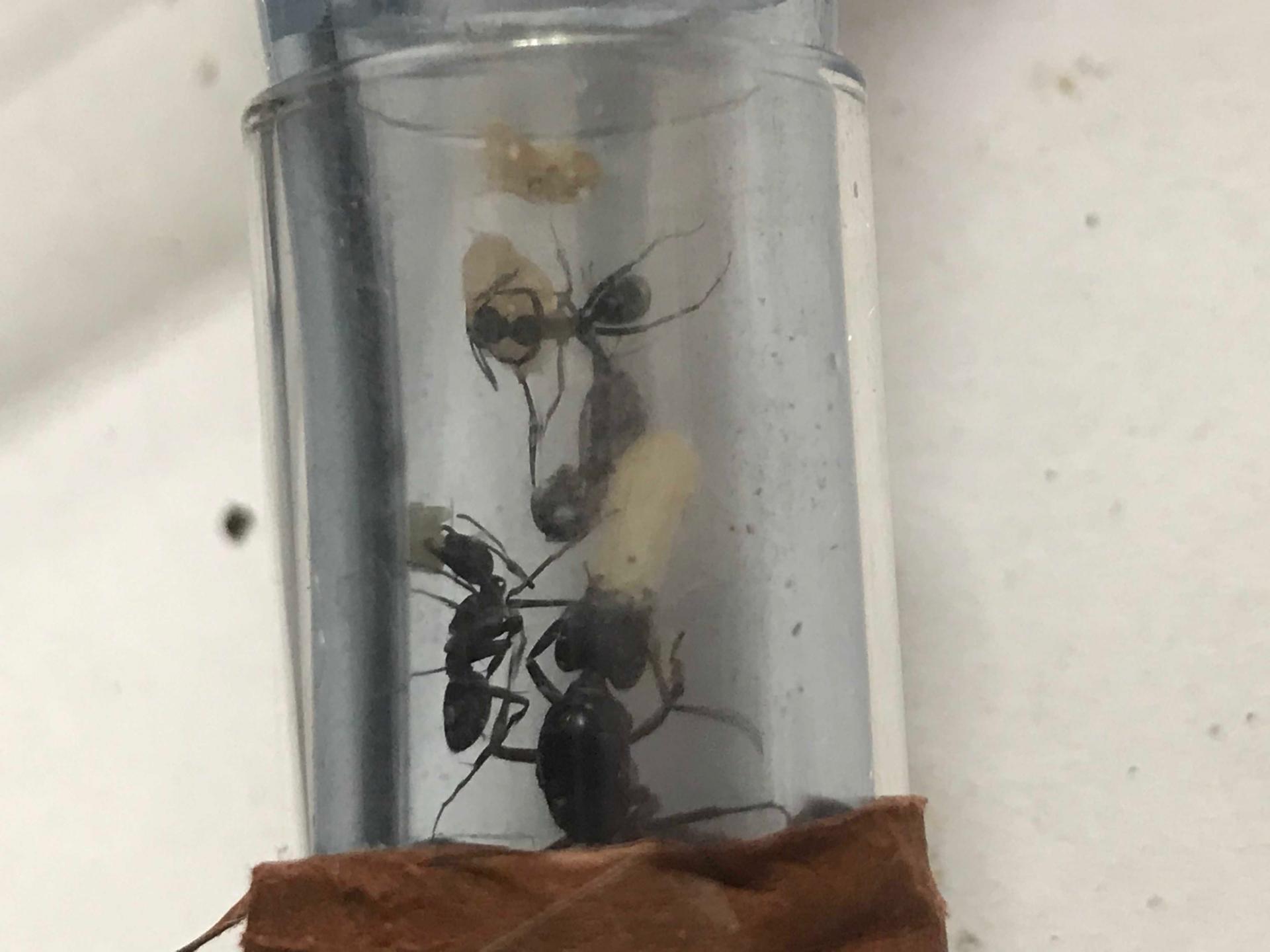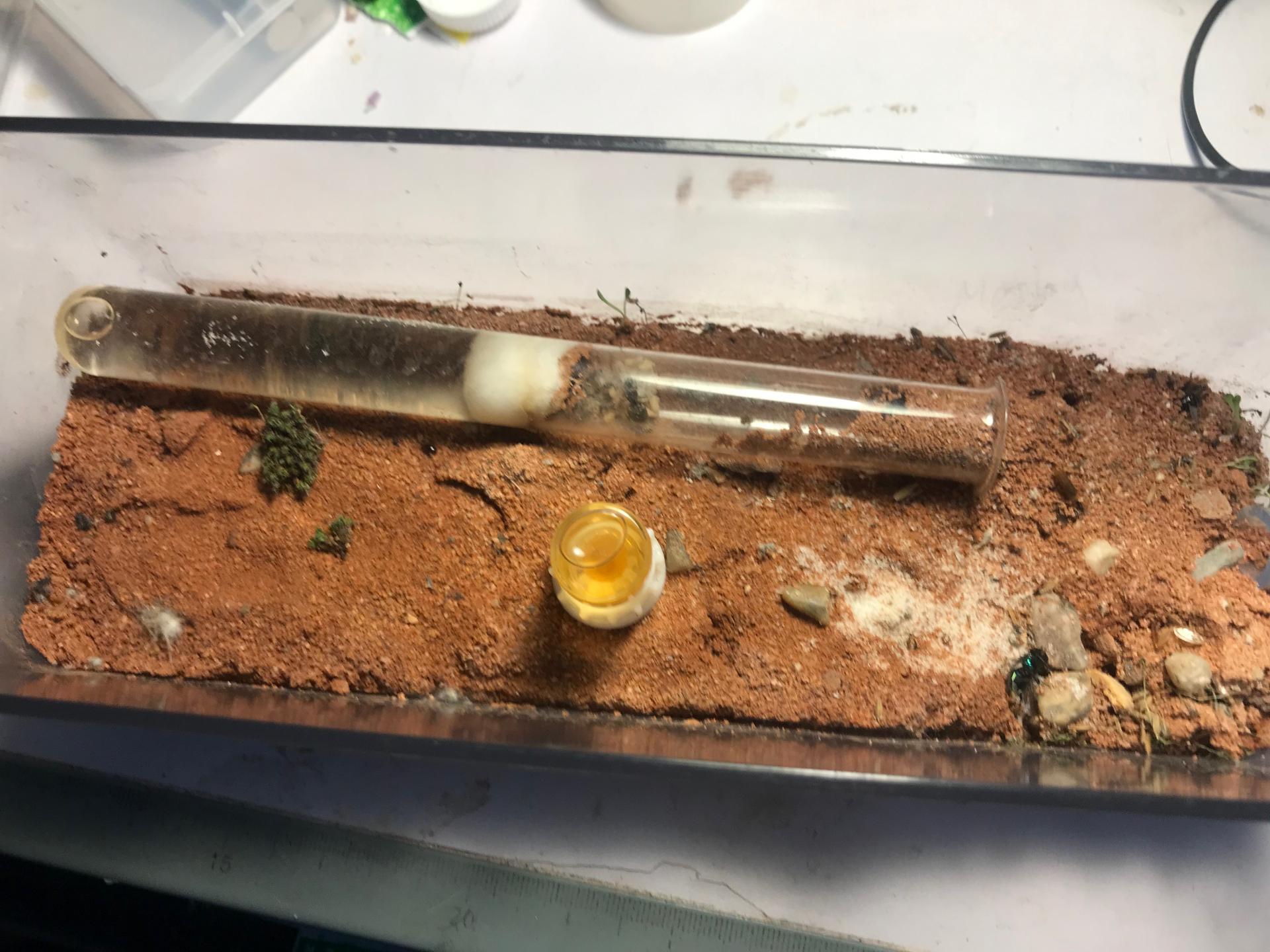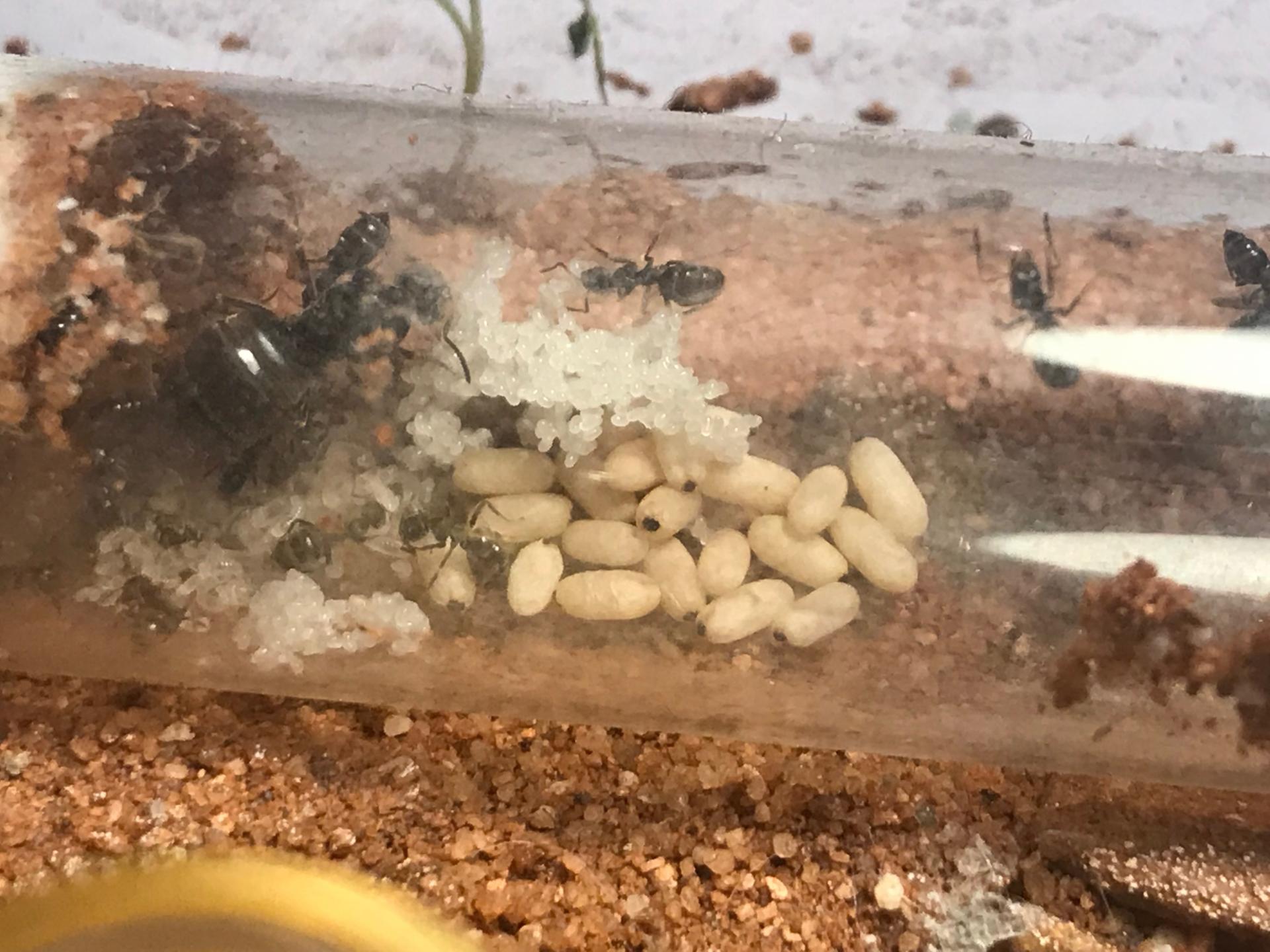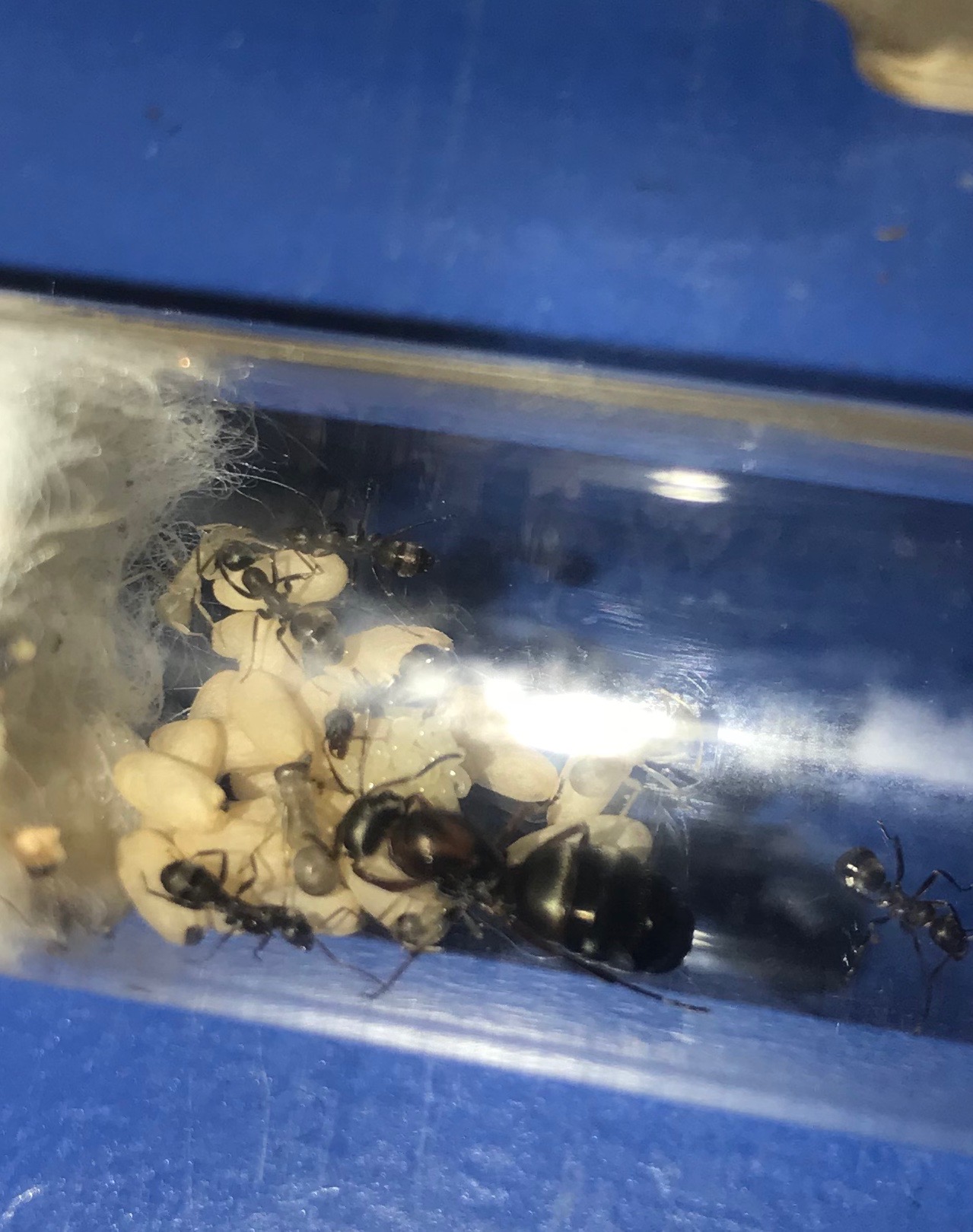Hello, in this journal I will update you on my colonies and document their growth.
For now, I will just focus on my Camponotus cruentatus and Serviformica rufibarbis. But once my Pogonomyrmex barbatus and Camponotus turkestanus have their first workers I will post Updates on them too.
So now let's get on with the journal.
(Servi)formica rufibarbis
26.6.2019
I caught the queen and identified her, ith the help of a german ant keeping discord server, as Serviformica rufibarbis . One of my favourite native species.
I then put her in a test tube setup and left her alone for about 2 weeks.
10.7.2019
We have some pupae. I counted around 10.
As I was about to leave on a family vacation, I poked a straw through the front cotton and put the covered test tube in a small outworld. There I offered some honey.
31.7.2019
Back from a very relaxing vacation, I checked up on all my Ants. All of them did great while I was gone.
Most of her pupae hatched and they somehow managed to catch a fruitfly.
But I also encountered some problems with this colony, they did not seem to like any of the sugary foods I offered them.
After weeks of trying they finally took some diluted invert sugar.
End of Oktober
The queen hasn´t laid any eggs since her initial founding batch.
They went into hibernation with all of my other native species and are all huddled together near the cotton.
29.02.2020
I spend some money and bought an Antfarm with Outworld from AntStore.
This will hopefully last them at least 20 years. The farm is 20cm * 20cm * 2cm and the outworld is 20cm *cm *10cm.
I will probably just lay the test tube in the outworld and once its filled take the cotton plug out of the tubing so that the ants can move into the antfarm.
Until Easter, this will be the last update on this colony, as they are still in hibernation.
Edited by LaTun, May 12 2020 - 8:40 AM.


